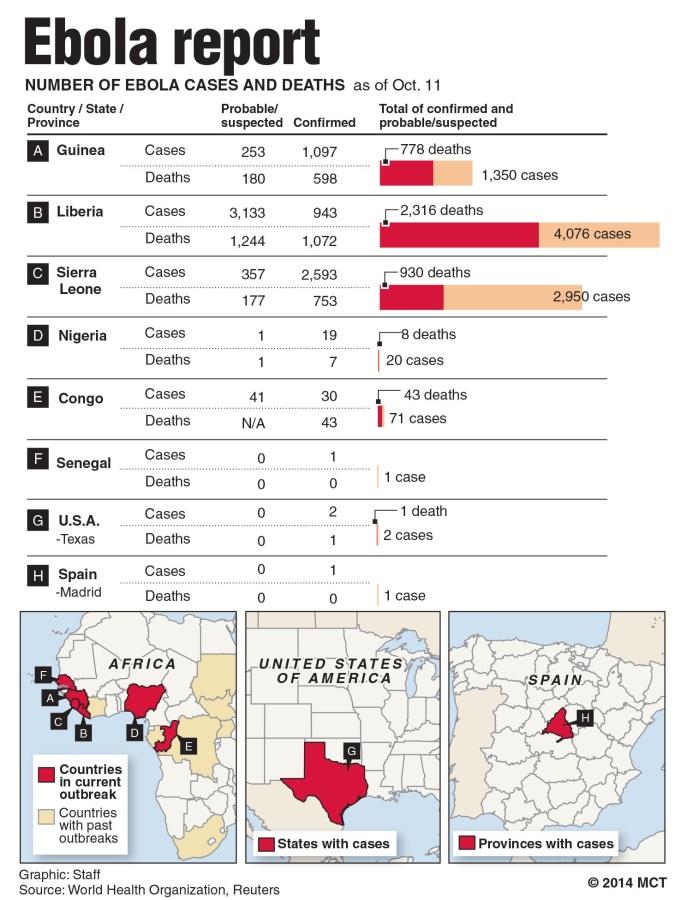U.S. airports to start screening for Ebola
Graphic from MCT Campus used with permission.
Map and chart showing cases of Ebola updated as of Oct. 11.
October 16, 2014
Chicago’s O’Hare airport becomes one of five airports in the nation to start screening for the Ebola virus today. The screening will only be applied to a few people, but it represents a renewed effort to keep out an epidemic that’s killed close to 4,000 people in West Africa alone, according to the World Health Orginization.
The other four airports participating in these screenings include: Hartfield-Jackson Atlanta International, New York’s John F. Kennedy International, Newark Liberty International, and Dulles International in Washington D.C. These airports were chosen, because approximately 150 passengers from Ebola-stricken countries pass through each airport each day.
Ebola outbreaks have a fatality rate of about 90%. Ebola is mainly found in West and Central Africa, and is most commonly transmitted through close contact with infected blood or bodily fluids. Coughing, sneezing, or touching an infected person’s skin will not transfer the disease, if proper health procautions– aka hand washing–are taken afterwards.
The reason Ebloa virus is taking people by storm is because many of the preliminary symptoms mimic other diseases, like Malaria, Typhoid Fever, and Cholera. It takes from 2 to 21 days for Ebola patients to start showing symptoms. Symptoms include: high fever, headache, lack of appetite and weakness. Coughing or sneezing are not signs of the disease. The most deadly symptom of Ebola is internal hemorrhage, bleeding from the inside. The R0 (basic reproduction rate) of Ebola is 4, this means that every person who is infected will infect four other people. The common R0 of HIV/AIDS is 3, and the R0 of chicken pox is between 1-8. In short, it’s not hard to get Ebola, but shaking hands with someone won’t infect a person.
Ebola doesn’t have a cure and the World Health Orginization says that up to 20,000 people could die before one is produced. To screen for Ebola, officials will take the temperature of all passengers coming from West African countries, before they even get off the plane. If their temperature is higher than 101.5 degrees farenheit, passengers are kept and quarantined. There is currently an extremely low risk of catching Ebola in the U.S.; but the new screening efforts at airports will be extremely effective at keeping the disease at bay.








